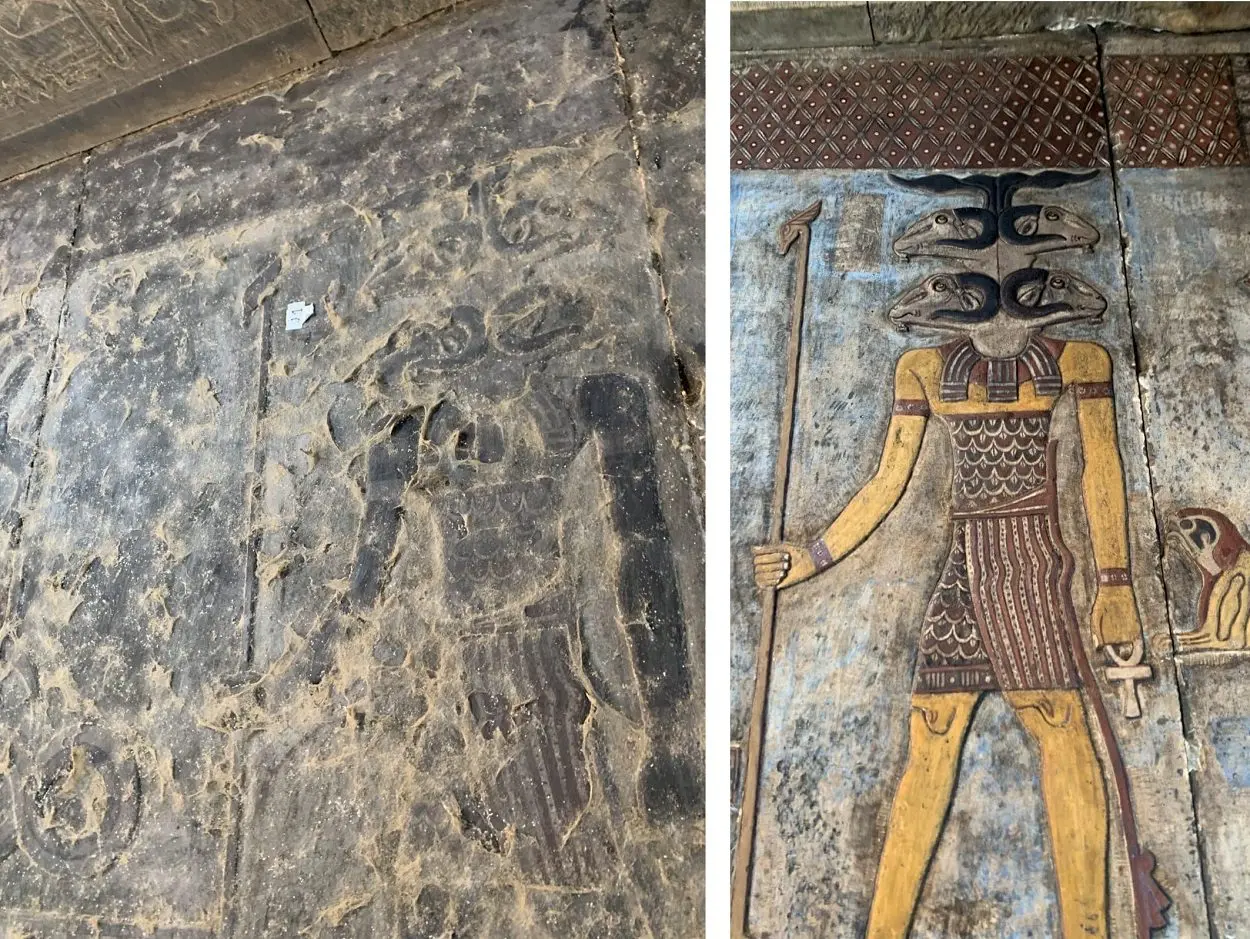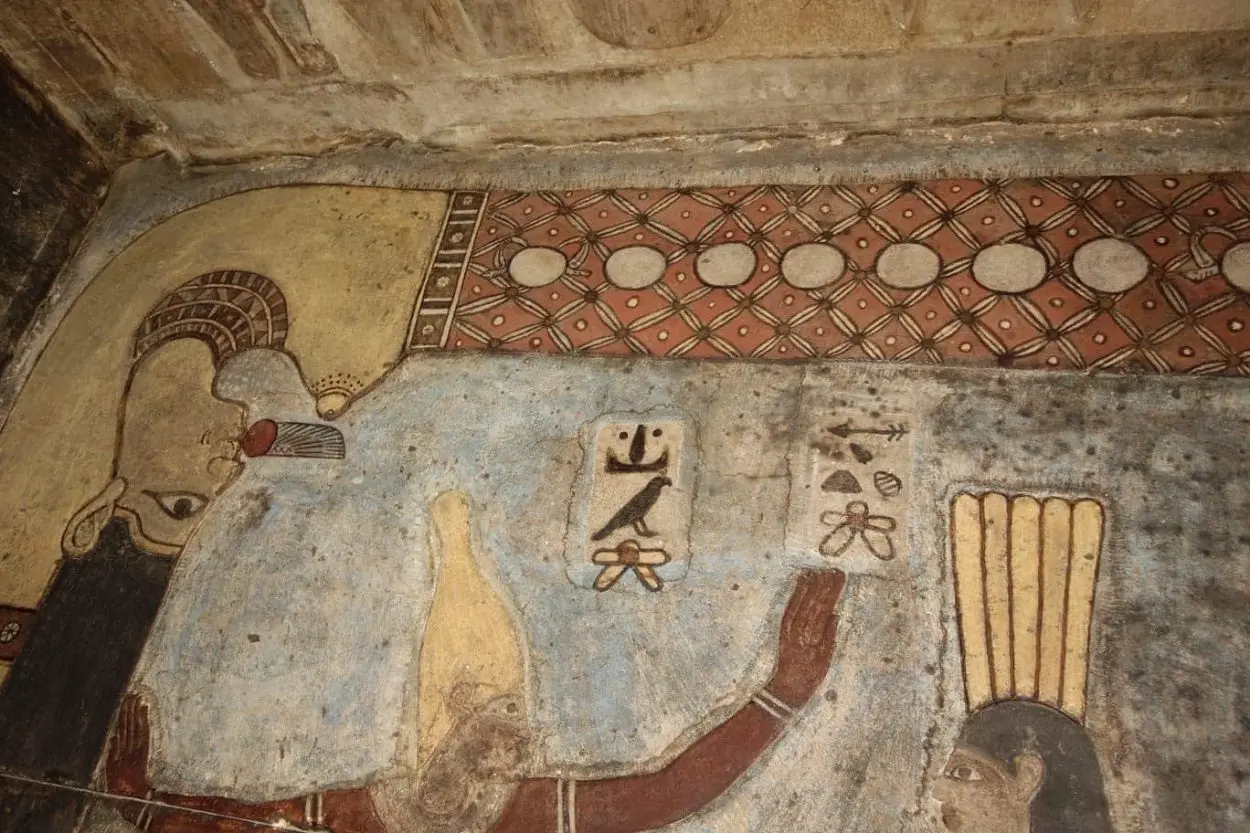An archaeological mission involving a joint Egyptian-German team have revealed new celestial imagery during cleaning and restoration works at the Temple of Esna.
The Temple of Esna, also known as the Temple of Khnum, is a temple complex dedicated to the Ancient Egyptian god, Khnum, his consorts Menhit and Nebtu, their son Heka, and the goddess Neith.
The temple was constructed during Ptolemaic times in the Egyptian city of Esna, which during antiquity was known as Latopolis.
During a restoration and re-colouring project first started in 2018, the team have recently uncovered new celestial reliefs on the temple roof.

According to the researchers, the roof reliefs depict the goddess Nut and other representations of the celestial constellations. Nut was the goddess of the sky, stars, cosmos, mothers, astronomy, and the universe in the Ancient Egyptian religion.
The relief shows Nut on all fours arching her back upward in a “covering” position that encompasses the semi-sphere of the visible sky observed from the perspective of the earth. Similar to many other depictions from across the Ancient Egyptian world, she is swallowing the sun which travels through her body at night to be reborn at dawn.
Also depicted in the eastern end of the temple is Thoth, the god of the moon, as well as the representation of the solar god Khnum-Ra with four ram heads at the sixth hour of the day.
Previous restoration works in March 2023 found representations of the heavens that depict the signs of the zodiac, several planets such as Jupiter, Saturn, and Mars, and a number of stars and constellations. Also found at the time are images of a snake with a ram’s head, a bird with a crocodile’s head, the tail of a snake and four wings, and depictions of snakes and crocodiles.
Ministry of Tourism and Antiquities
Header Image Credit : Ministry of Tourism and Antiquities





